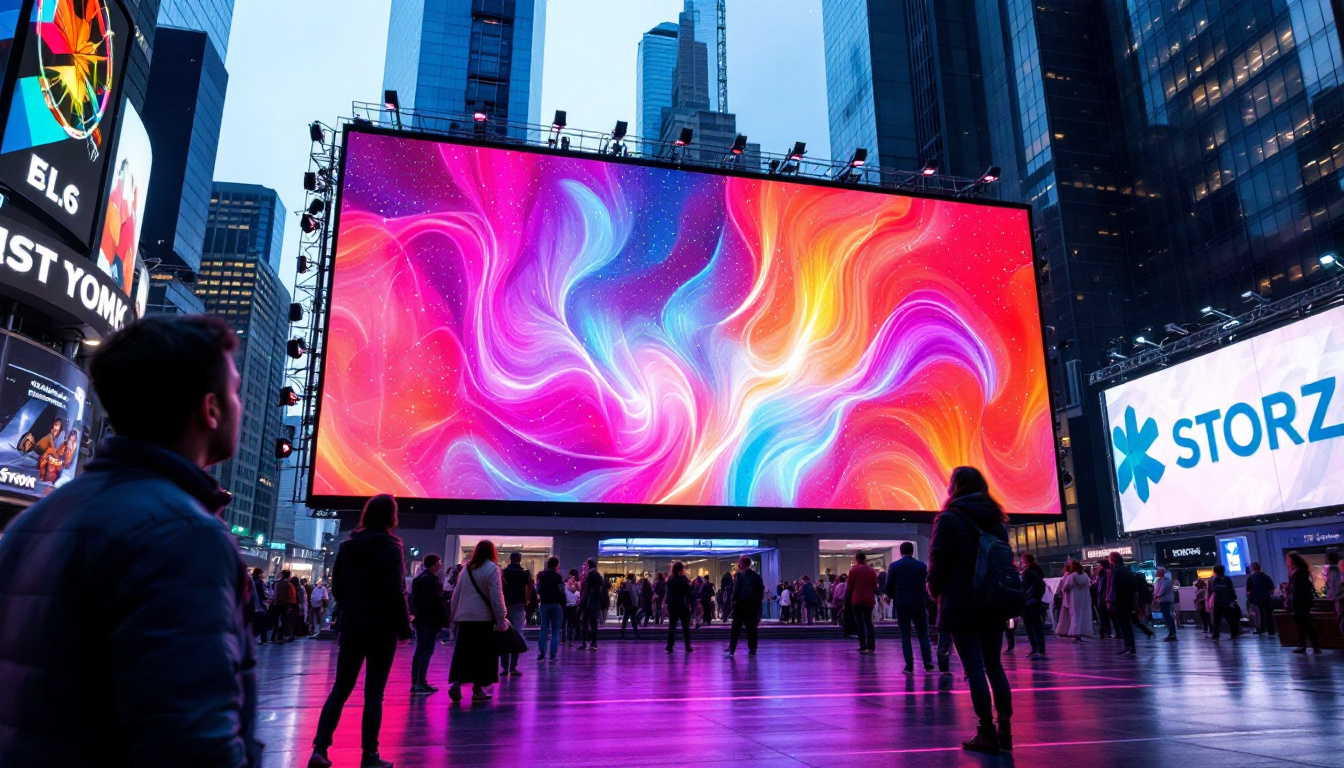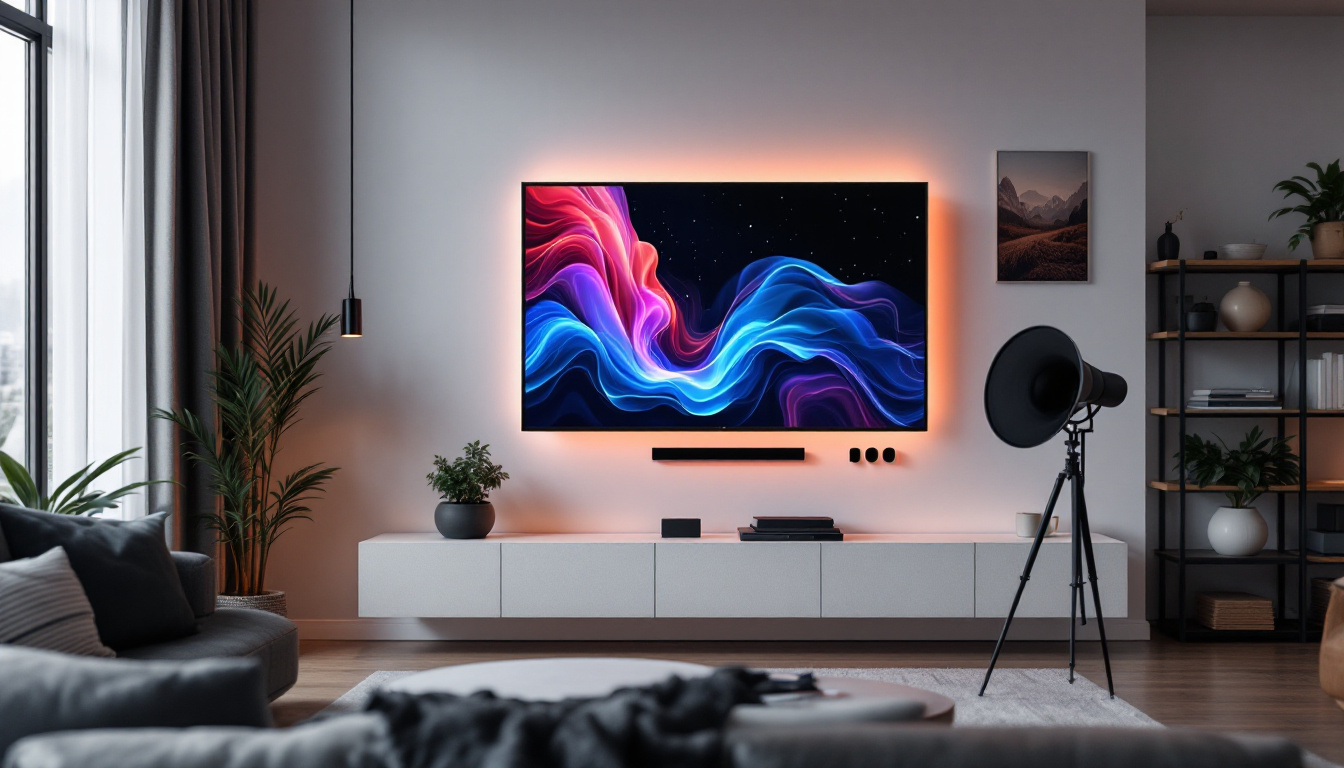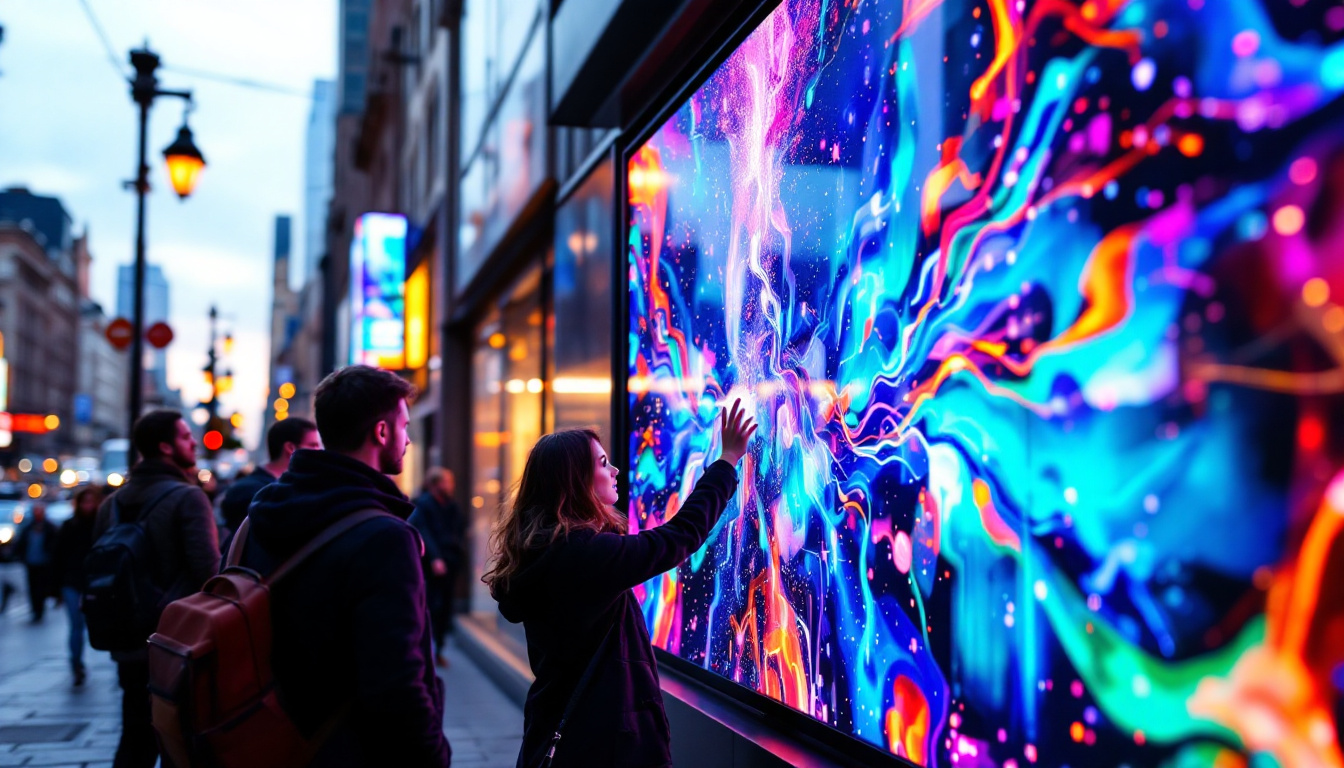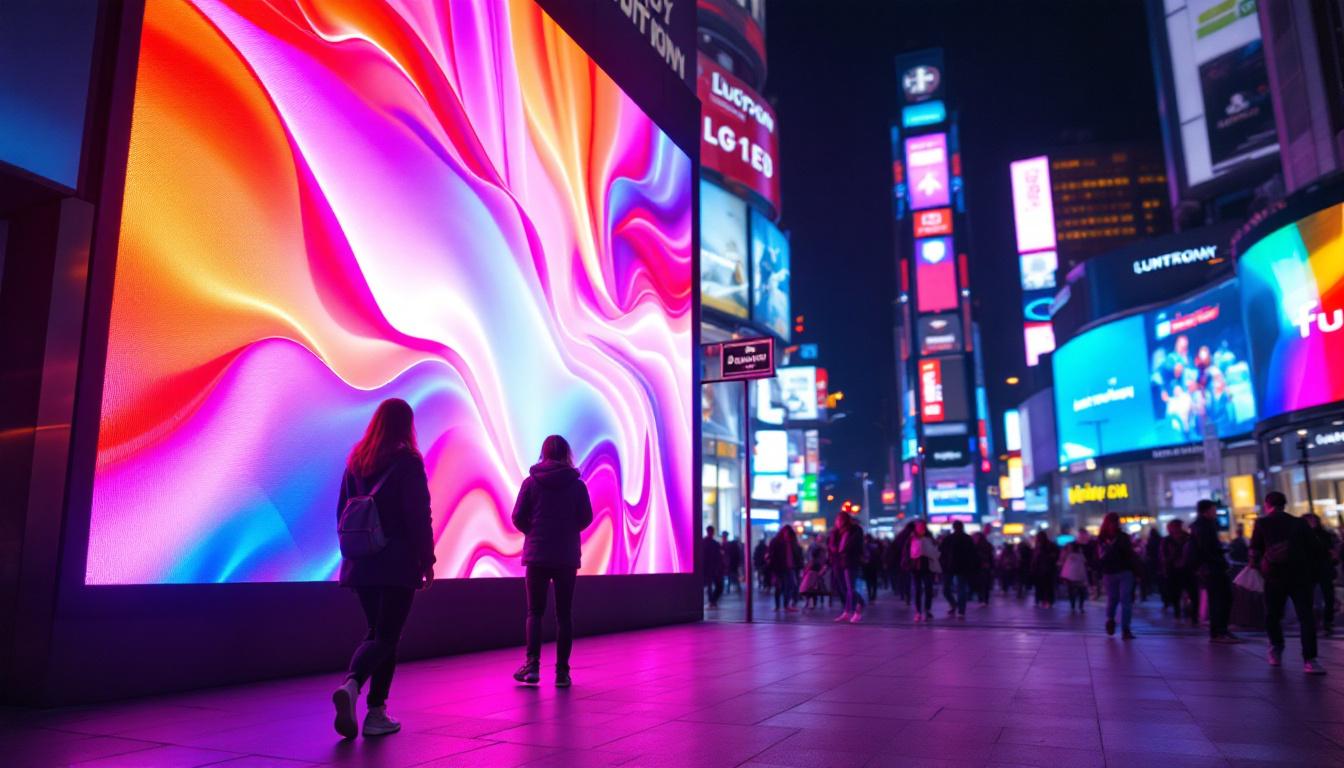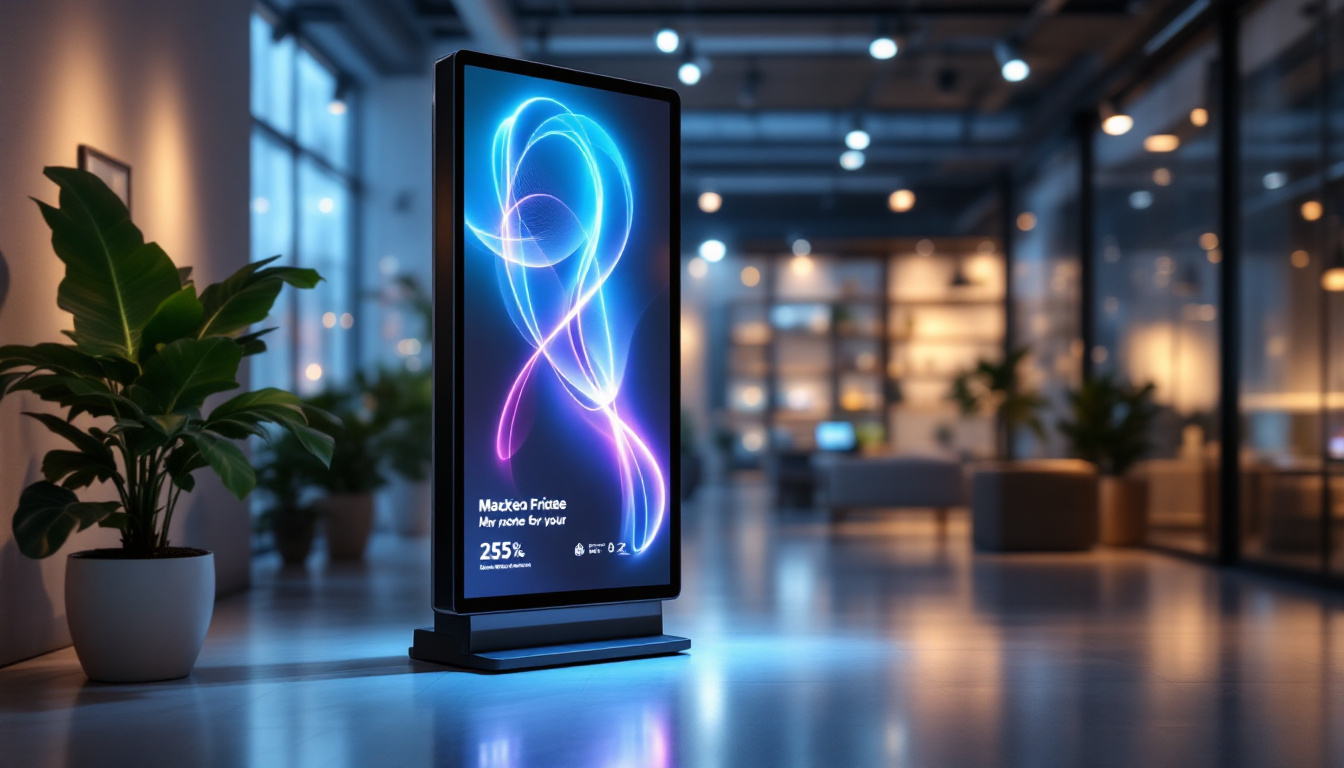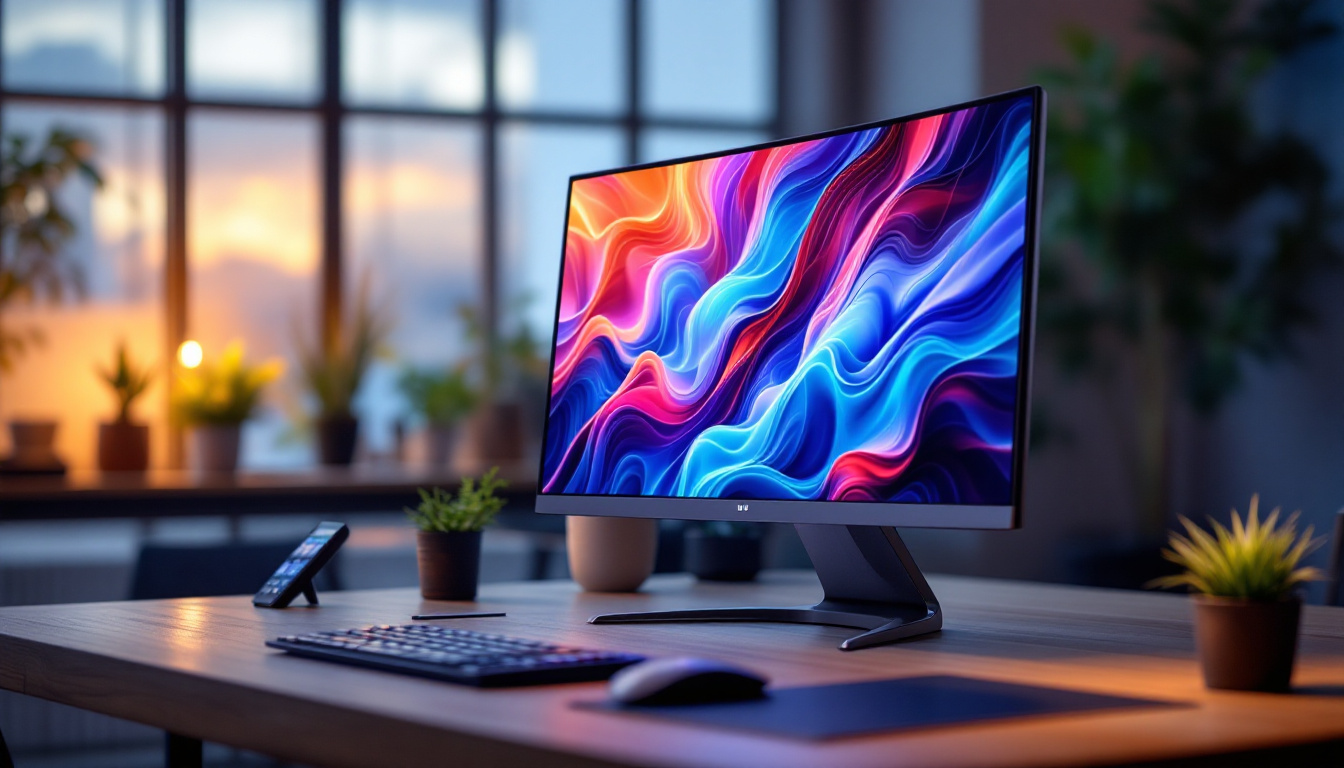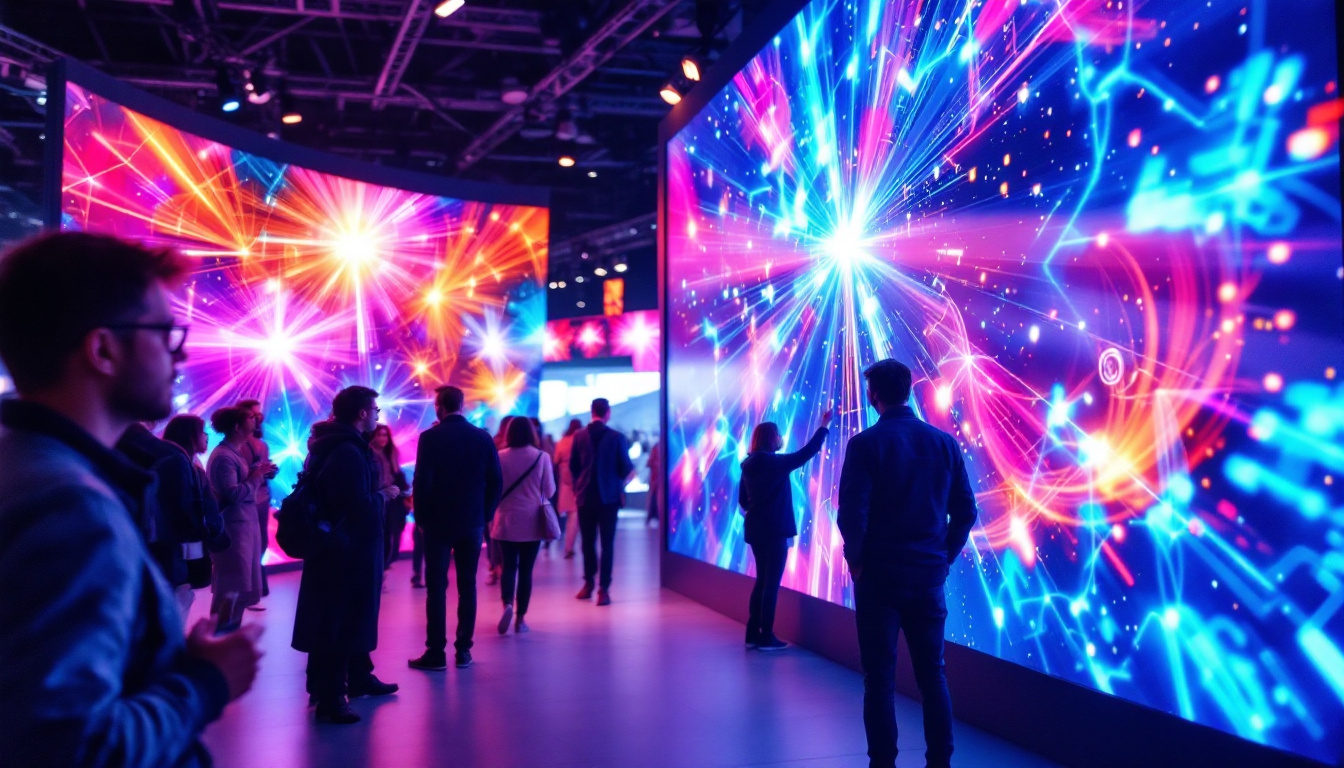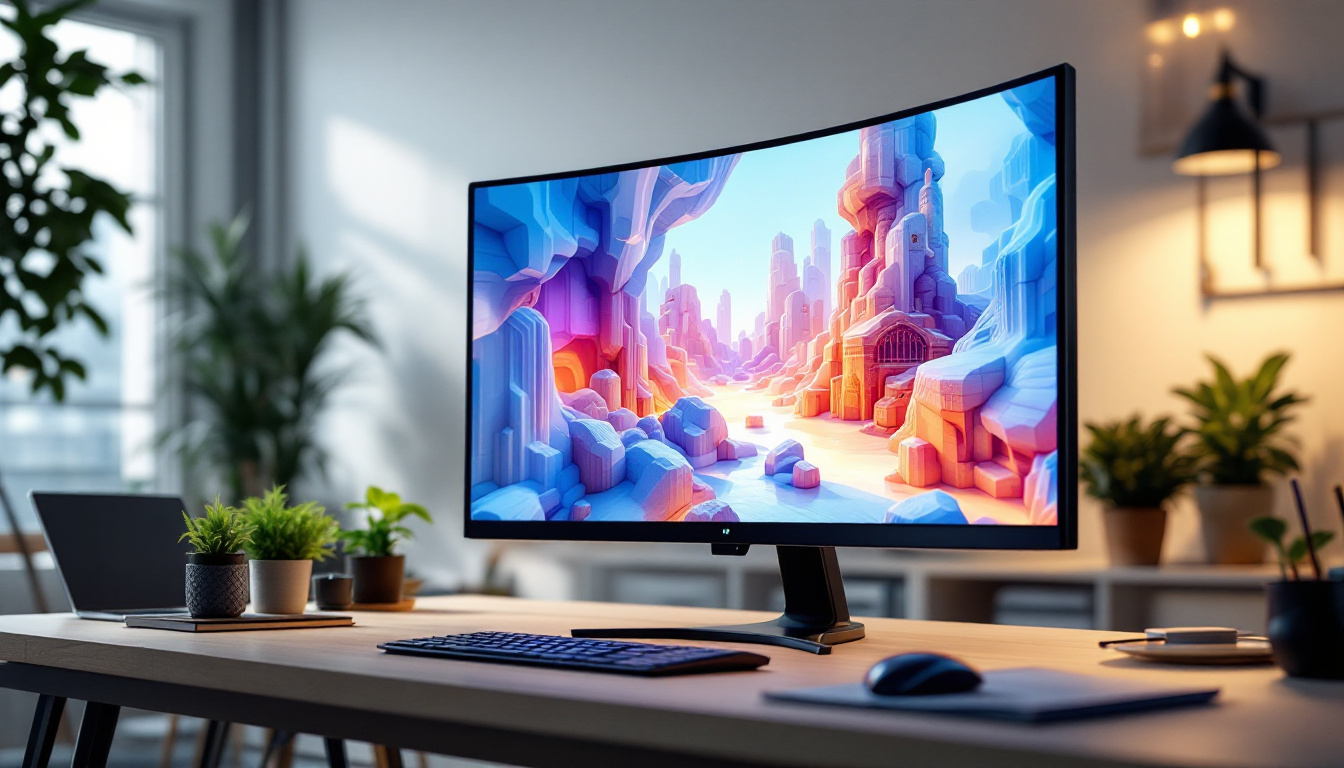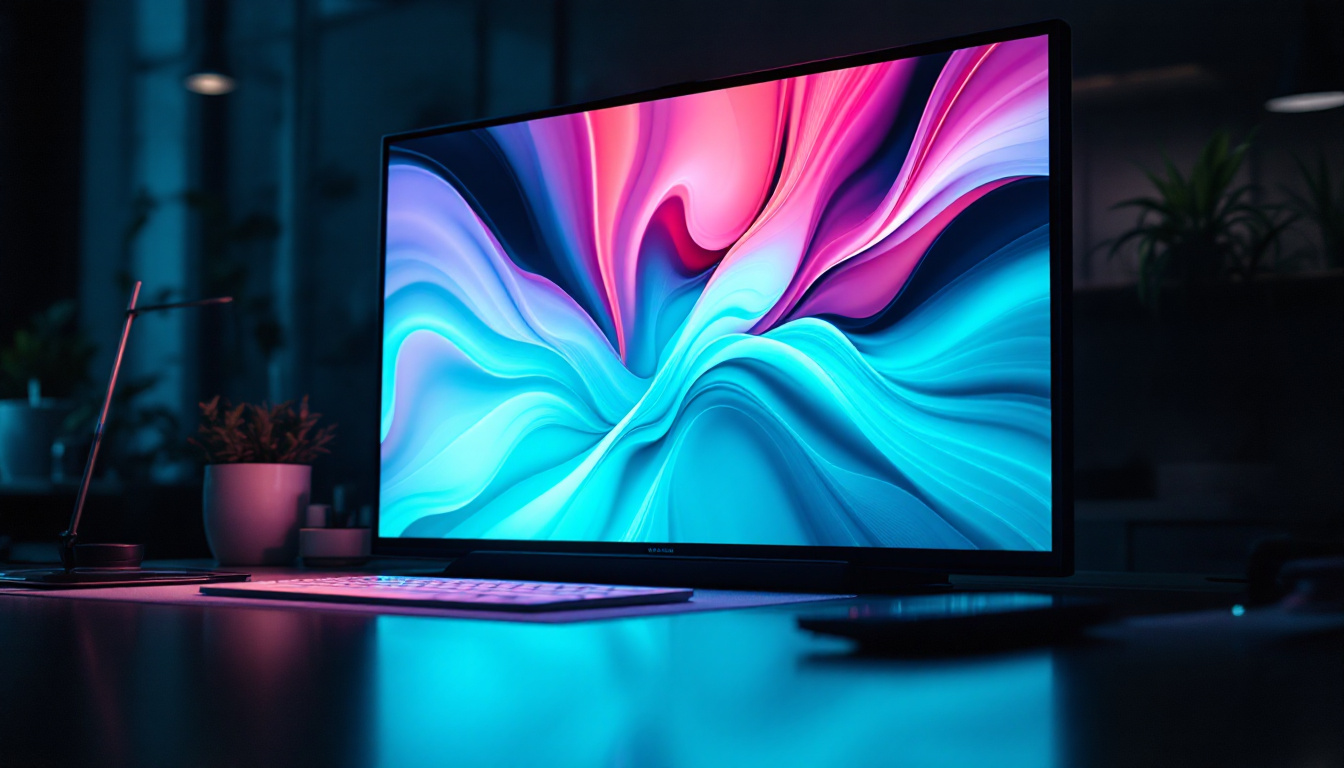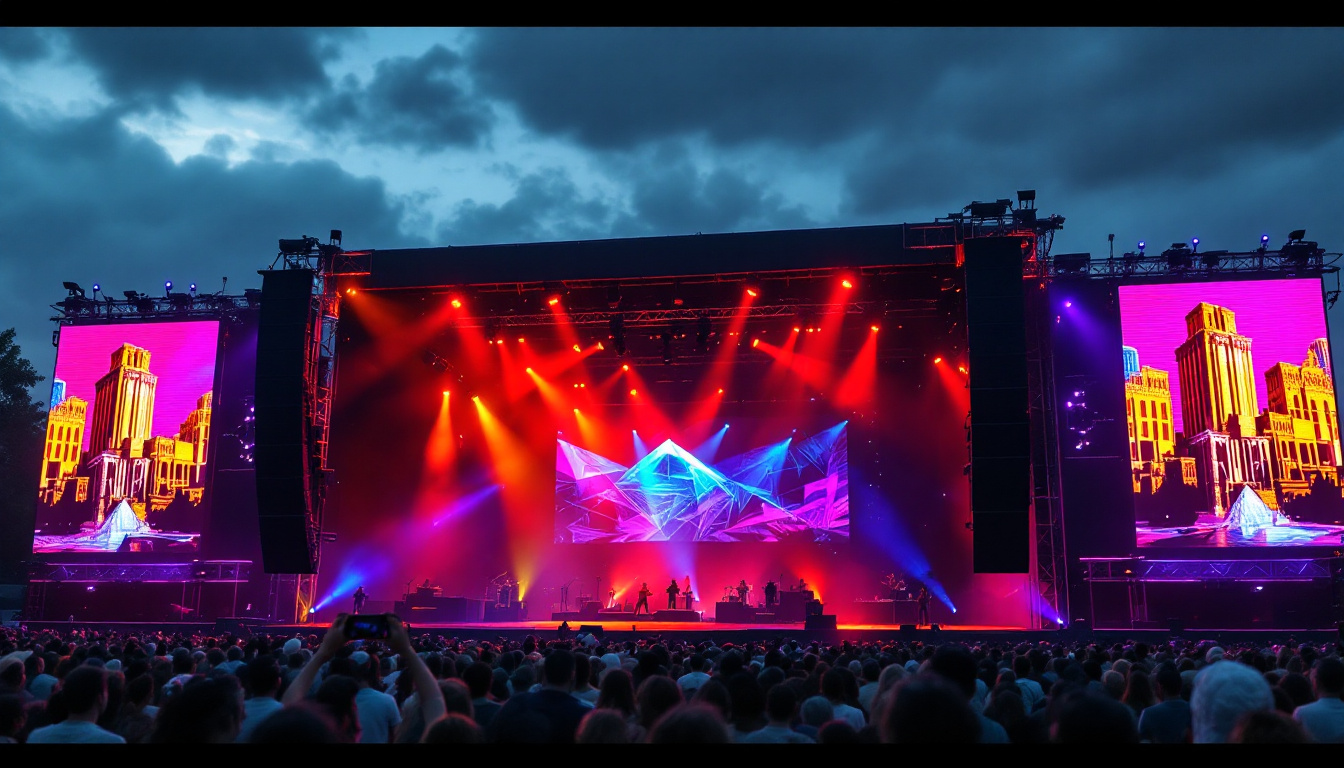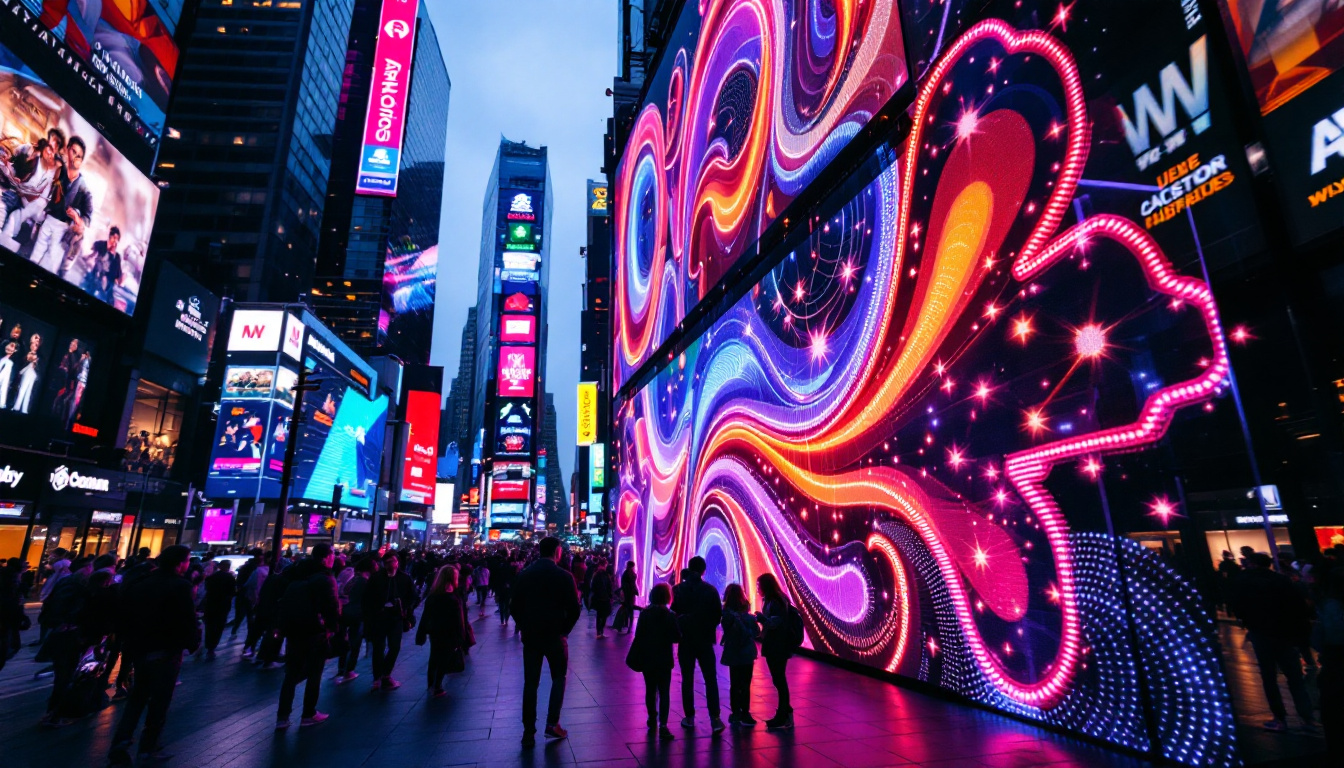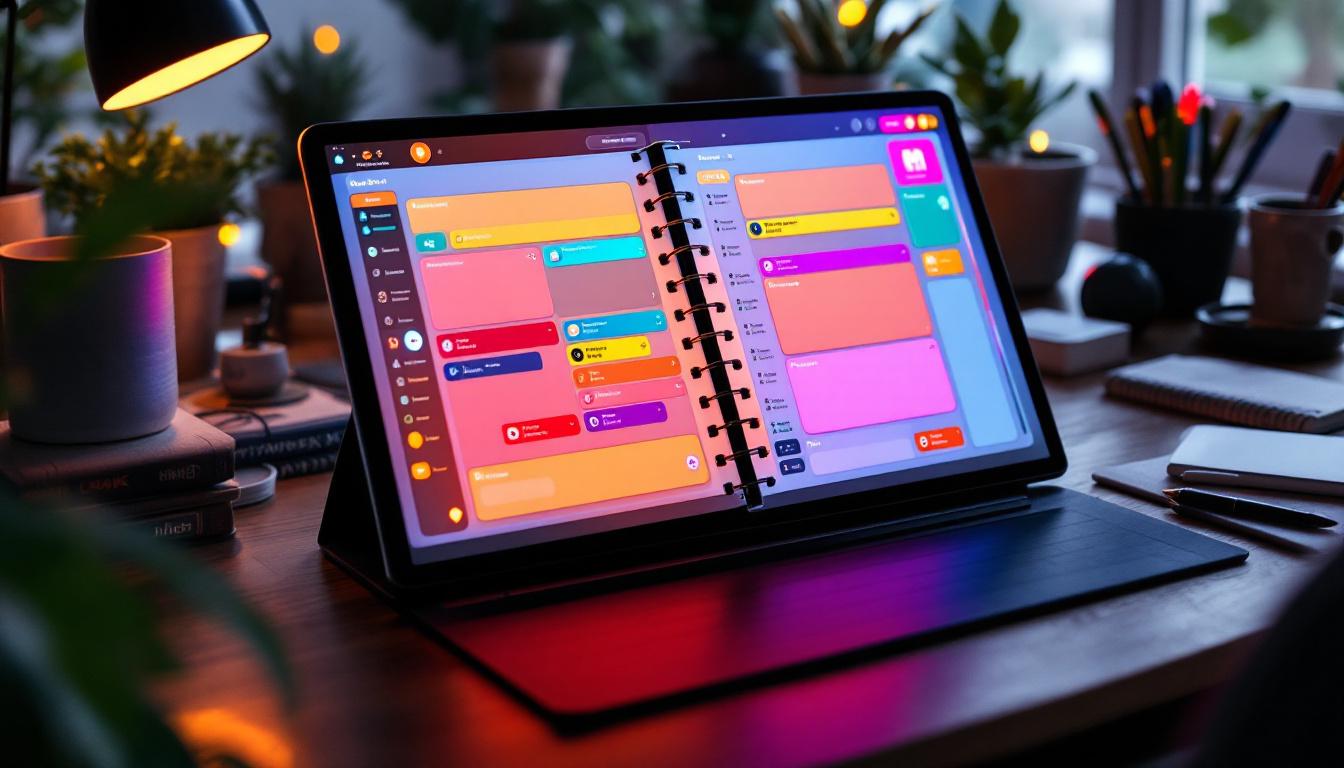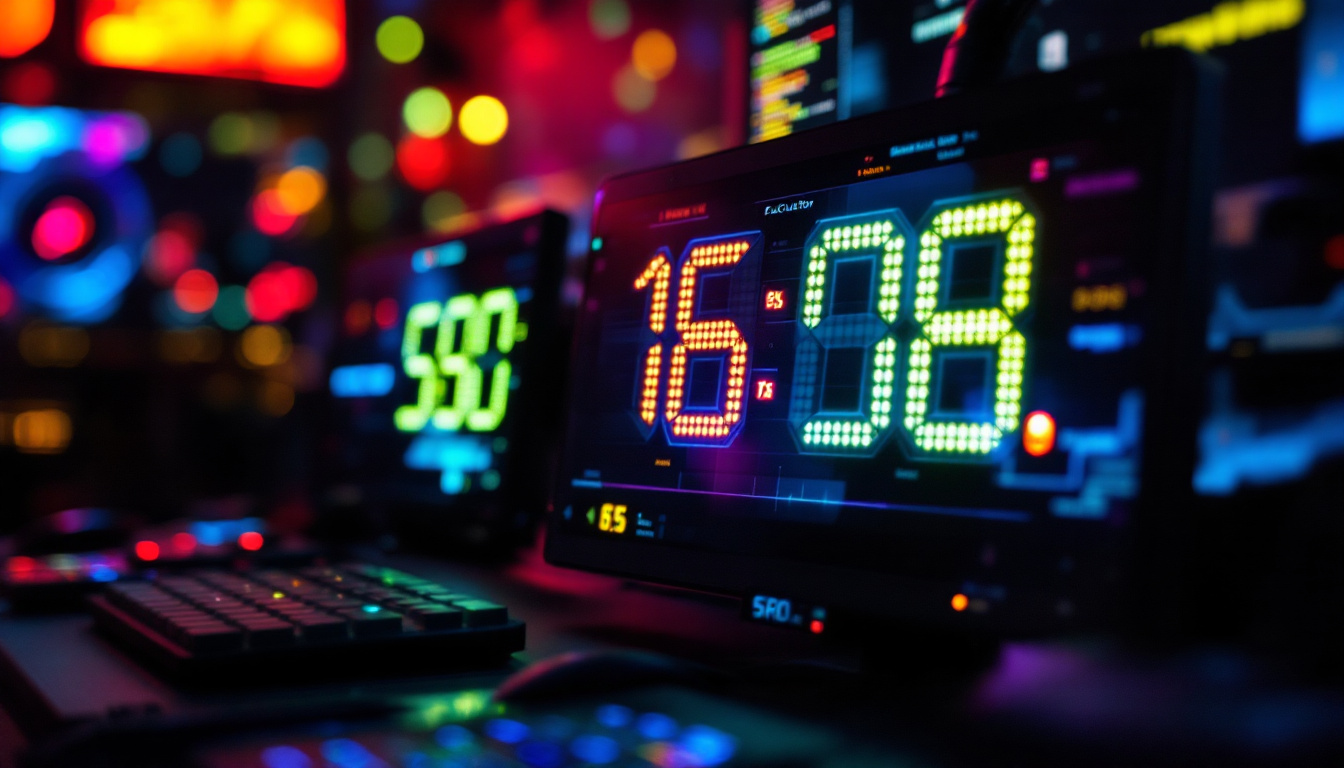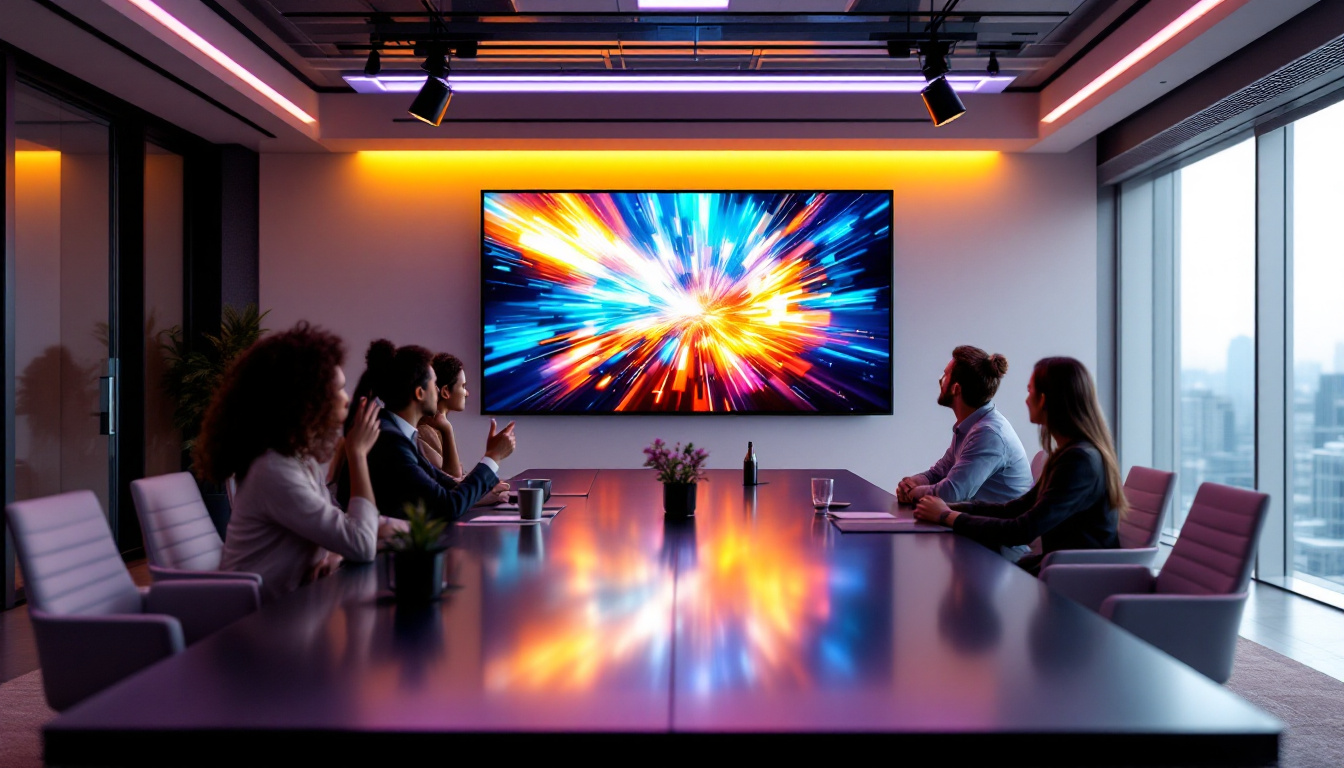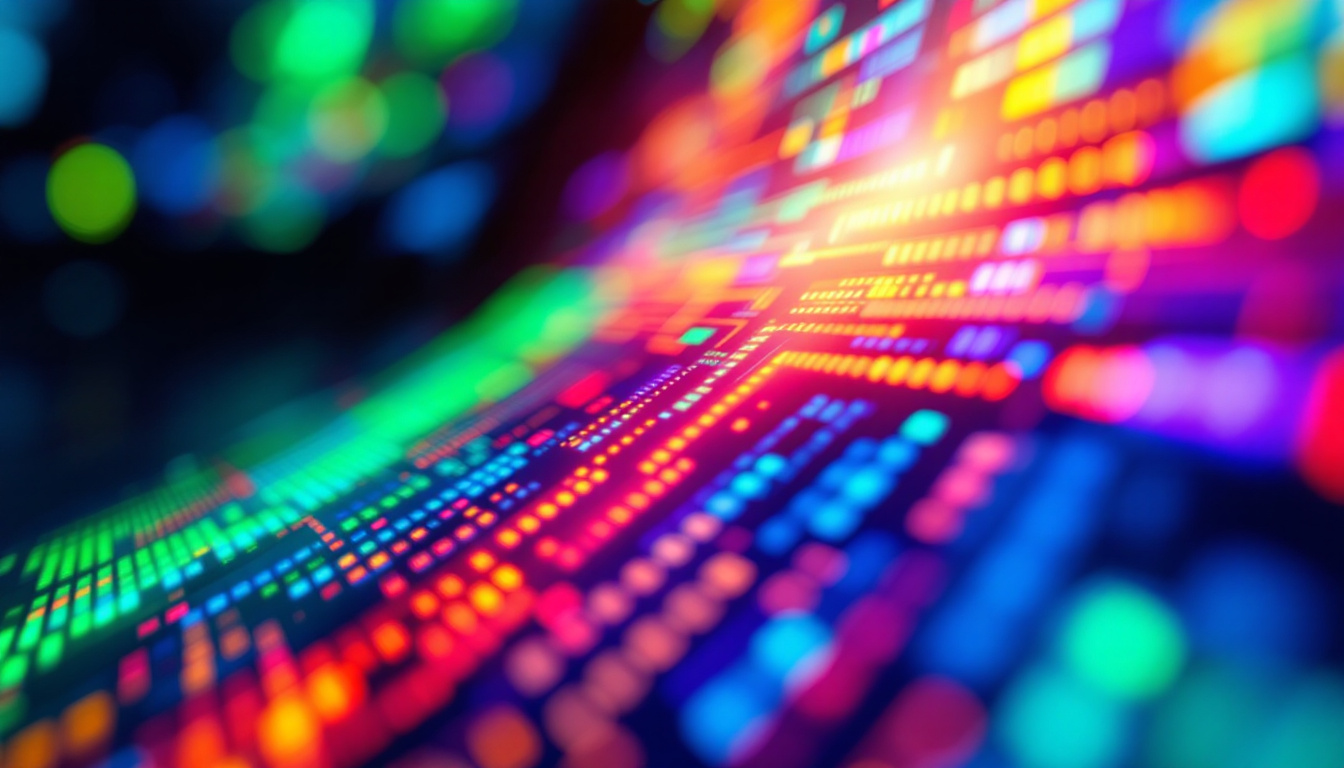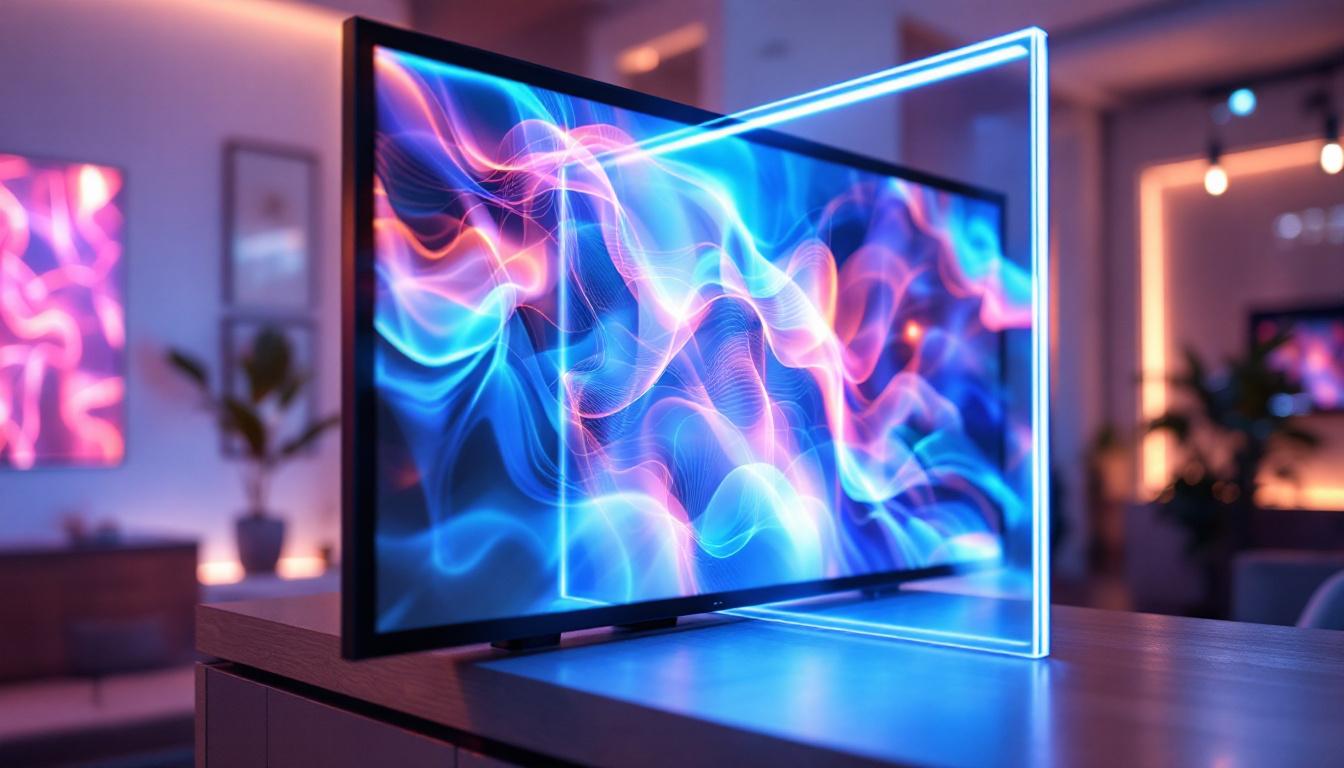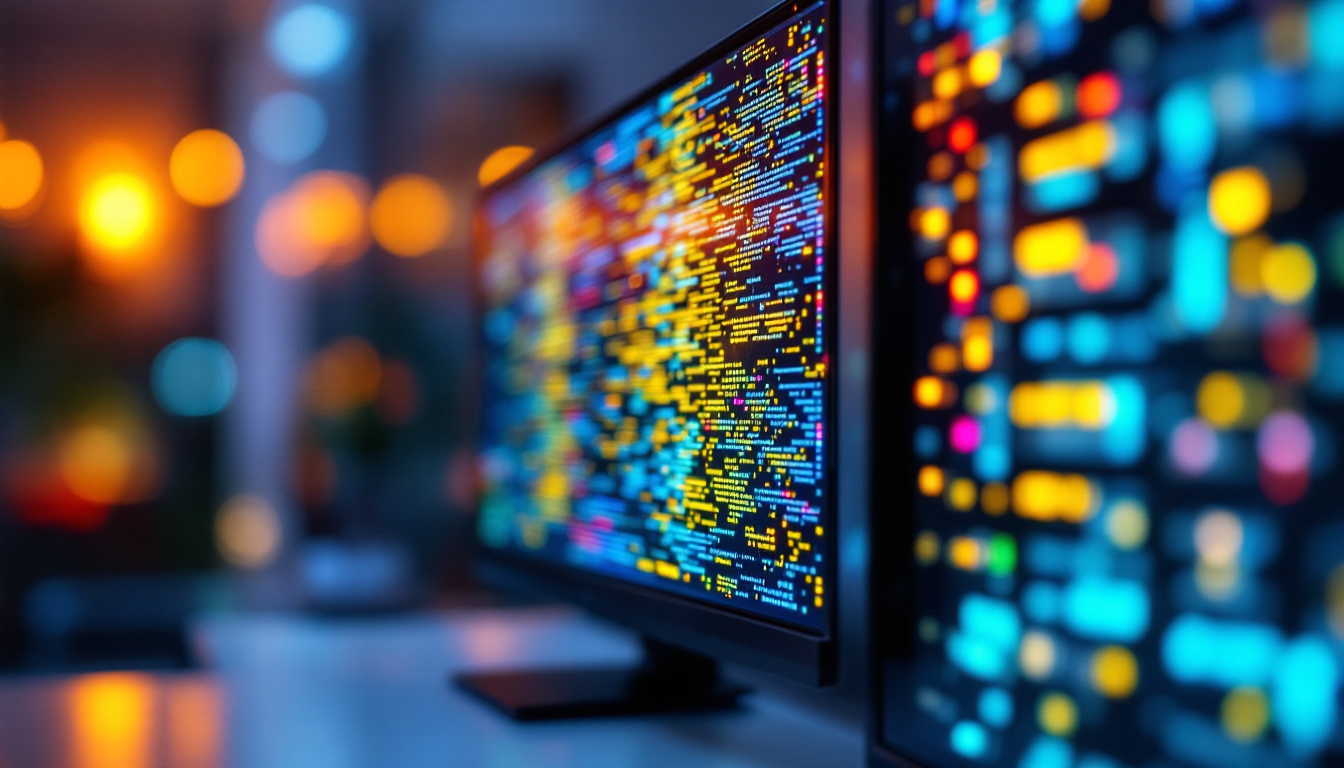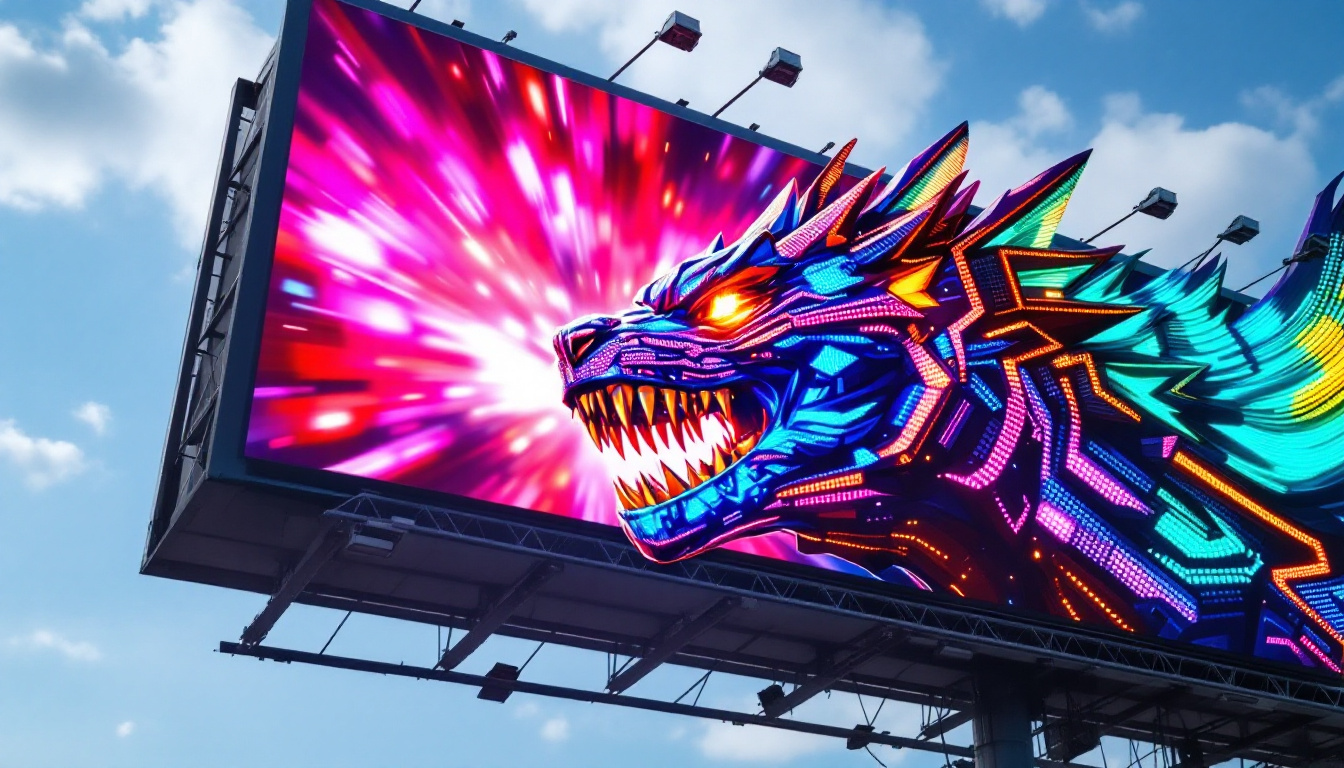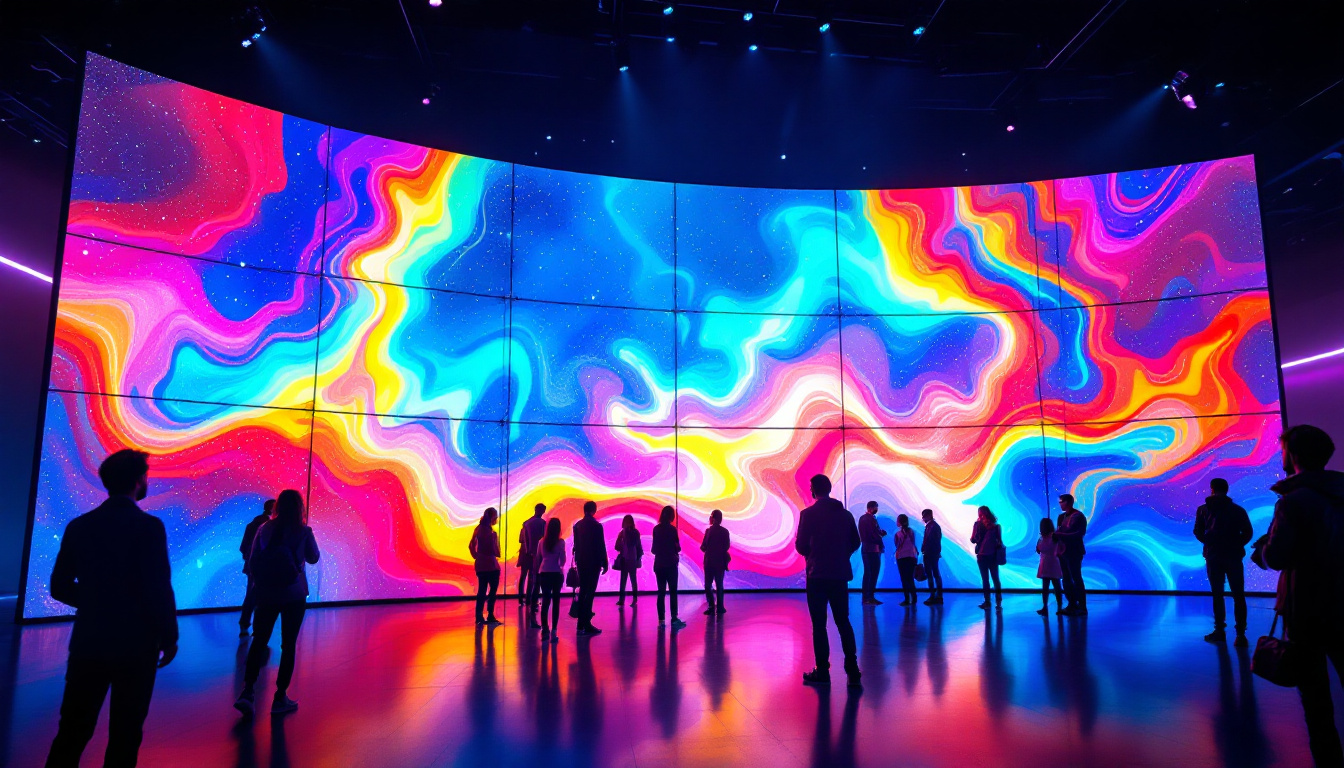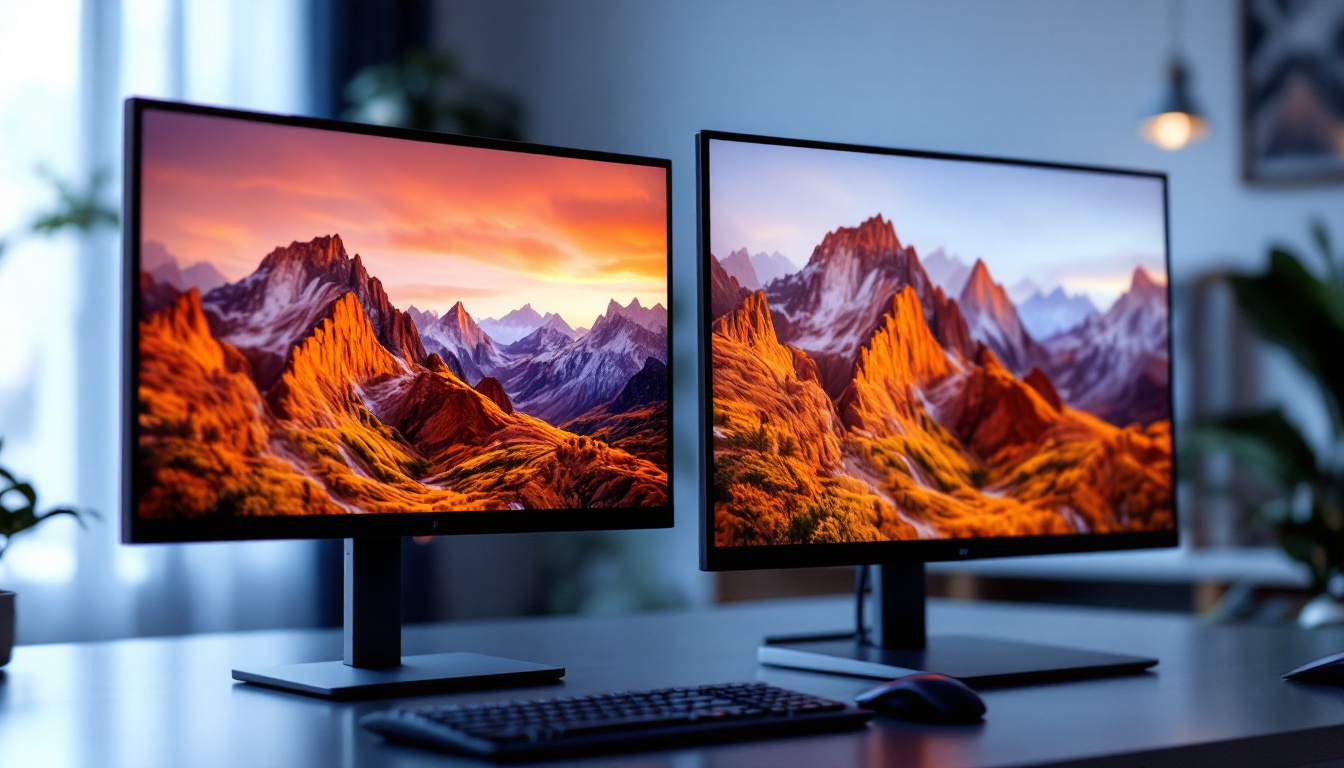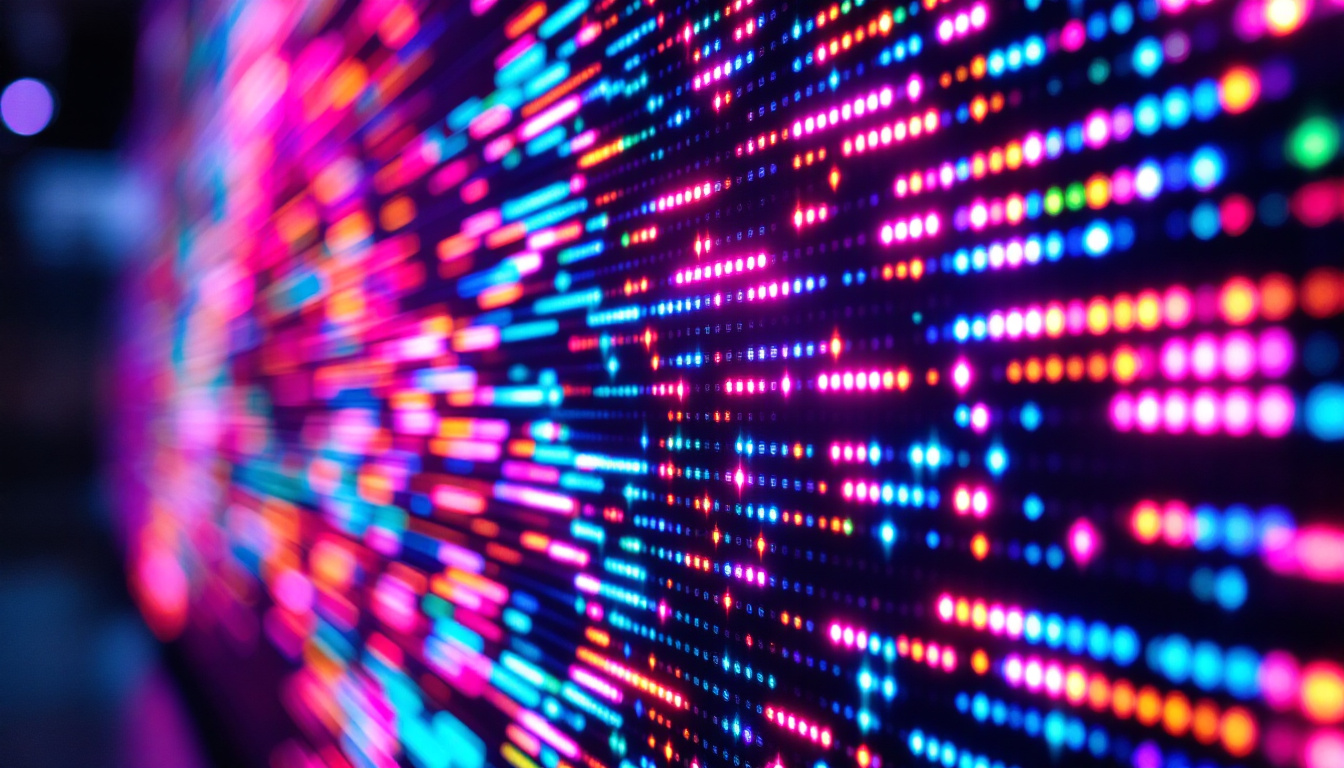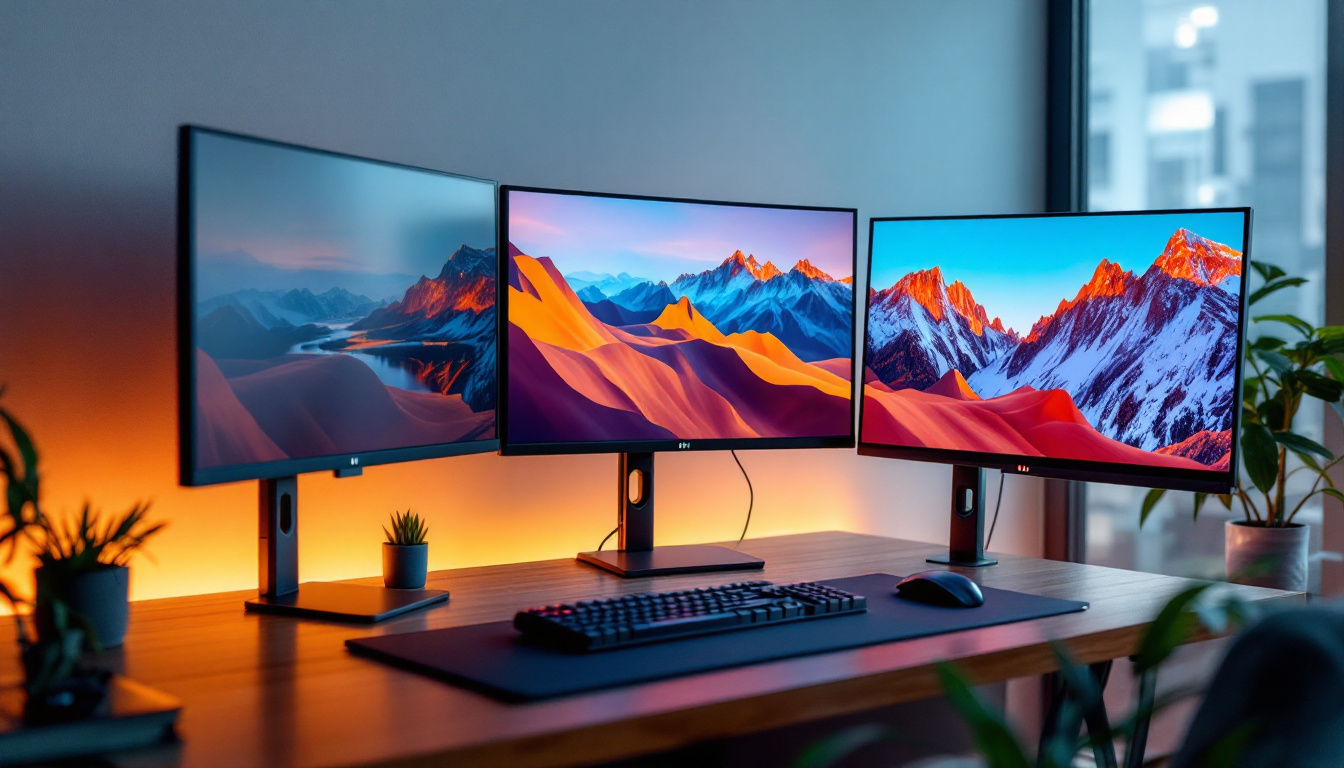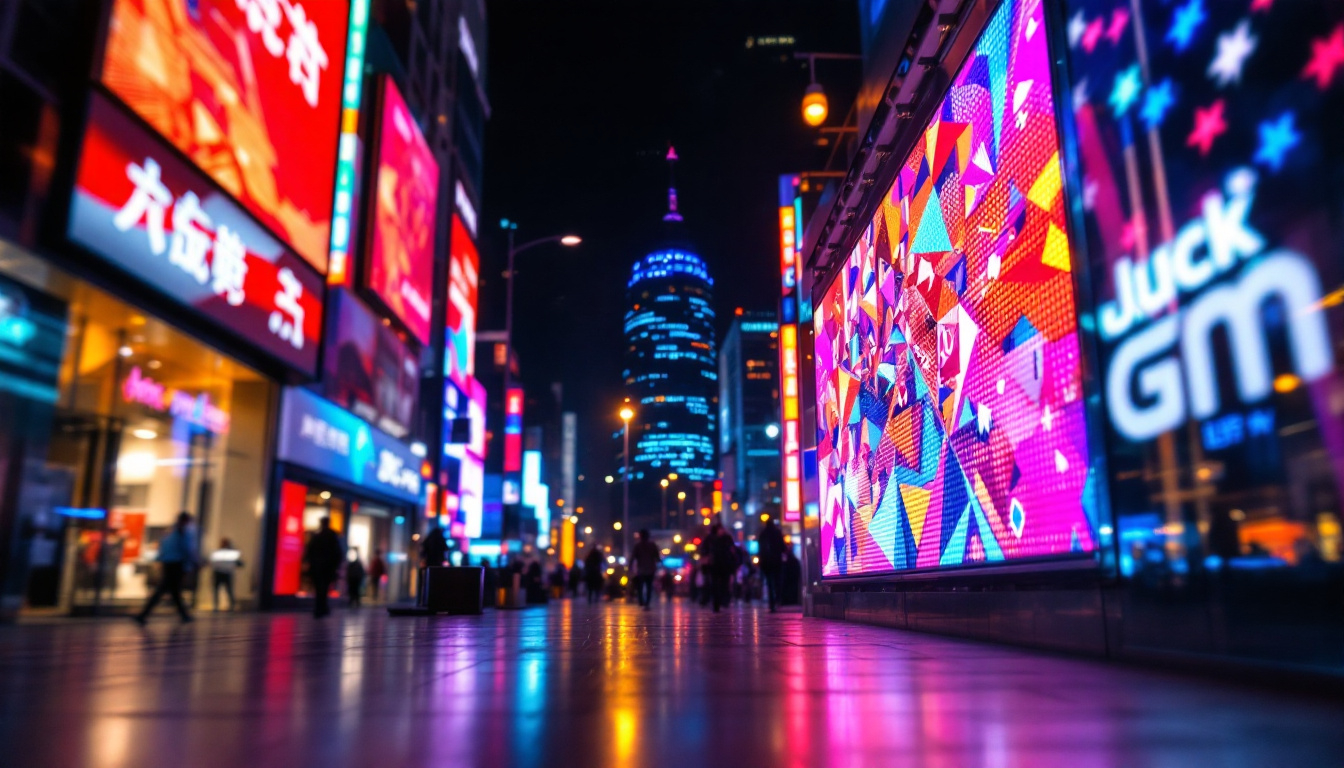World’s Biggest Monitor: LED Display Explained
In an era where visual technology is advancing at an unprecedented pace, the demand for larger and more immersive displays has surged. Among these innovations, the world’s biggest monitor stands out, not just for its size but also for its cutting-edge LED technology. This article delves into the intricacies of LED displays, their applications, and what makes them a revolutionary choice for both personal and professional use.
The Evolution of Display Technology
To understand the significance of the world’s largest monitor, it is essential to explore the evolution of display technology. From the early cathode-ray tubes (CRTs) to the sleek flat screens of today, each advancement has brought us closer to achieving stunning visual experiences.
From CRTs to LCDs
Initially, CRTs dominated the market, offering bulky yet functional displays. However, as technology progressed, liquid crystal displays (LCDs) emerged, providing thinner profiles and better energy efficiency. LCDs became the standard for televisions and computer monitors, paving the way for more advanced technologies. The transition from CRTs to LCDs not only improved the aesthetics of devices but also significantly reduced the weight, making them more portable and easier to integrate into various environments. This shift also marked a turning point in consumer preferences, as users began to favor sleek designs that complemented modern interiors.
The Rise of LED Technology
LED (Light Emitting Diode) technology revolutionized the display industry by offering brighter images, improved contrast ratios, and greater energy efficiency. Unlike traditional LCDs, which rely on backlighting, LED displays utilize individual diodes to produce light, resulting in deeper blacks and vibrant colors. This innovation has made LED displays the preferred choice for a wide range of applications, from home entertainment to large-scale advertising. Furthermore, the introduction of OLED (Organic Light Emitting Diode) technology took this advancement a step further by allowing for even thinner screens with flexible designs, enabling manufacturers to create curved and ultra-slim displays that were previously unimaginable. The ability of OLEDs to produce true blacks by turning off individual pixels has set a new standard for picture quality, captivating audiences in both cinematic experiences and high-end gaming setups.
The Impact of 4K and Beyond
As display technology continued to evolve, the introduction of 4K resolution brought an unprecedented level of detail to screens. With four times the pixel count of 1080p, 4K displays deliver stunning clarity that enhances everything from streaming content to video games. This surge in resolution has also led to the development of HDR (High Dynamic Range) technology, which expands the range of colors and contrast, making images appear more lifelike. As consumers increasingly demand higher quality visuals, manufacturers are now exploring even greater resolutions, such as 8K, pushing the boundaries of what is possible in display technology. The integration of smart features into displays has also transformed the viewing experience, allowing users to access streaming services, social media, and even gaming platforms directly from their screens, further blurring the lines between traditional media consumption and interactive entertainment.
What Makes the World’s Biggest Monitor Unique?
The title of the world’s biggest monitor is not just a matter of size; it encompasses a variety of features that enhance the viewing experience. This monitor, often used in commercial settings, combines cutting-edge technology with impressive specifications.
Size and Resolution
The sheer size of the world’s largest monitor is staggering, measuring several meters in width and height. This enormous display typically boasts a resolution of 8K or higher, allowing for crystal-clear images that captivate viewers. Such high resolution ensures that even the smallest details are visible, making it ideal for applications like digital signage, exhibitions, and live events. The expansive screen real estate also allows for multi-window setups, enabling users to display multiple streams of content simultaneously, which is particularly useful in control rooms or during large presentations.
Color Accuracy and Brightness
One of the standout features of this monitor is its exceptional color accuracy. With the ability to reproduce a wide color gamut, it ensures that images appear true to life. Coupled with high brightness levels, the display remains visible even in brightly lit environments, making it suitable for outdoor use as well. This level of brightness is achieved through advanced LED technology, which not only enhances visibility but also contributes to energy efficiency, allowing for prolonged use without significant power consumption. Furthermore, the monitor’s adaptive brightness features automatically adjust the display based on ambient light conditions, ensuring optimal viewing experiences at all times.
Advanced Connectivity Options
The world’s largest monitor is equipped with a plethora of connectivity options, making it versatile for various applications. With multiple HDMI, DisplayPort, and USB-C inputs, users can easily connect a range of devices, from computers to media players. This flexibility is crucial for environments that require seamless integration of different technologies, such as corporate boardrooms or event venues. Additionally, many of these monitors support wireless connectivity, allowing for effortless screen sharing and collaboration without the clutter of cables. This feature not only enhances the user experience but also promotes a cleaner, more organized workspace.
Interactive Features
In addition to its impressive display capabilities, the world’s largest monitor often includes interactive features that elevate its functionality. Touchscreen technology allows users to engage directly with the content, making it ideal for educational settings or interactive displays at trade shows. This interactivity can foster greater audience engagement, as viewers can manipulate the content in real-time, whether it be zooming in on details or navigating through presentations. Moreover, some models incorporate gesture recognition, enabling users to control the display with simple hand movements, further enhancing the user experience and making it a futuristic addition to any setting.
Applications of the World’s Biggest Monitor
The versatility of the world’s largest monitor extends across various sectors, each leveraging its capabilities to enhance communication and engagement.
Advertising and Marketing
In the realm of advertising, size matters. The world’s biggest monitor serves as an eye-catching platform for brands to showcase their products and services. Whether displayed in shopping malls, airports, or stadiums, its impressive visuals draw attention, making it a powerful tool for marketers. dynamic content can be updated in real-time, allowing for timely promotions and interactive experiences.
Entertainment and Events
Large-scale events, such as concerts or sports games, benefit immensely from the use of massive LED displays. They provide audiences with an immersive experience, ensuring that even those seated far from the stage can enjoy high-quality visuals. Additionally, these monitors can be used for live streaming, allowing fans to engage with events from anywhere in the venue.
Corporate and Educational Uses
In corporate settings, the world’s biggest monitor can transform presentations and meetings. With its ability to display detailed graphics and videos, it enhances communication and collaboration among teams. Educational institutions also leverage this technology for interactive learning experiences, making complex subjects more engaging for students.
Technical Specifications of LED Displays
Understanding the technical specifications of LED displays is crucial for appreciating their capabilities. Several factors contribute to the overall performance and quality of these monitors.
Pixel Pitch and Density
Pixel pitch refers to the distance between individual pixels on the display. A smaller pixel pitch results in higher pixel density, which translates to sharper images. The world’s biggest monitor typically features a pixel pitch of less than 2mm, ensuring that viewers can enjoy high-resolution content from various distances without noticing individual pixels.
Refresh Rate and Response Time
The refresh rate, measured in hertz (Hz), indicates how many times the display refreshes the image per second. A higher refresh rate leads to smoother motion, which is particularly important for fast-paced content like sports or action movies. Additionally, a low response time minimizes motion blur, enhancing the overall viewing experience.
Challenges and Considerations
While the world’s biggest monitor offers numerous advantages, there are also challenges and considerations to keep in mind.
Installation and Maintenance
Installing such a massive display requires careful planning and execution. The structural integrity of the installation site must be assessed to ensure that it can support the weight and size of the monitor. Additionally, maintenance can be more complex compared to smaller displays, as accessing certain components may require specialized equipment.
Cost Factors
The investment required for the world’s biggest monitor can be substantial. Not only is the initial purchase price high, but ongoing operational costs, including electricity and maintenance, should also be factored in. Organizations must weigh these costs against the potential benefits of increased visibility and engagement.
The Future of LED Displays
The future of LED display technology looks promising, with continuous advancements on the horizon. As manufacturers innovate, several trends are emerging that could shape the next generation of displays.
MicroLED Technology
MicroLED technology is gaining traction as a potential successor to traditional LED displays. By utilizing microscopic LEDs, this technology promises even greater brightness, contrast, and color accuracy. MicroLED displays are also more energy-efficient, making them an attractive option for large-scale applications.
Flexible and Transparent Displays
Another exciting development is the emergence of flexible and transparent LED displays. These innovative designs allow for creative installations that can fit into unconventional spaces. Transparent displays, in particular, open up new possibilities for advertising and information sharing, as they can blend seamlessly into their surroundings.
Conclusion
The world’s biggest monitor represents a significant leap in display technology, combining size, resolution, and advanced features to create an unparalleled viewing experience. As industries continue to explore the potential of LED displays, the applications are vast and varied, from advertising to education. While challenges exist, the benefits of such technology can outweigh the drawbacks, making it a worthwhile investment for many organizations.
As we look to the future, advancements in LED technology promise to further enhance the capabilities of these displays. Whether through microLED innovations or flexible designs, the possibilities are endless. The world’s biggest monitor is not just a testament to what is possible today but a glimpse into the future of visual communication.
Discover LumenMatrix’s Innovative LED Display Solutions
Ready to elevate your visual experience with the cutting-edge technology discussed in this article? LumenMatrix is at the forefront of LED display innovation, offering a diverse range of products from Indoor and Outdoor LED Wall Displays to specialized solutions like Vehicle and Sports LED Displays. Whether you’re looking to captivate your audience with a Floor LED Display or make a bold statement with a Custom LED Display, LumenMatrix has the expertise to bring your vision to life. Check out LumenMatrix LED Display Solutions today and see how we can transform your visual communication and engagement.

